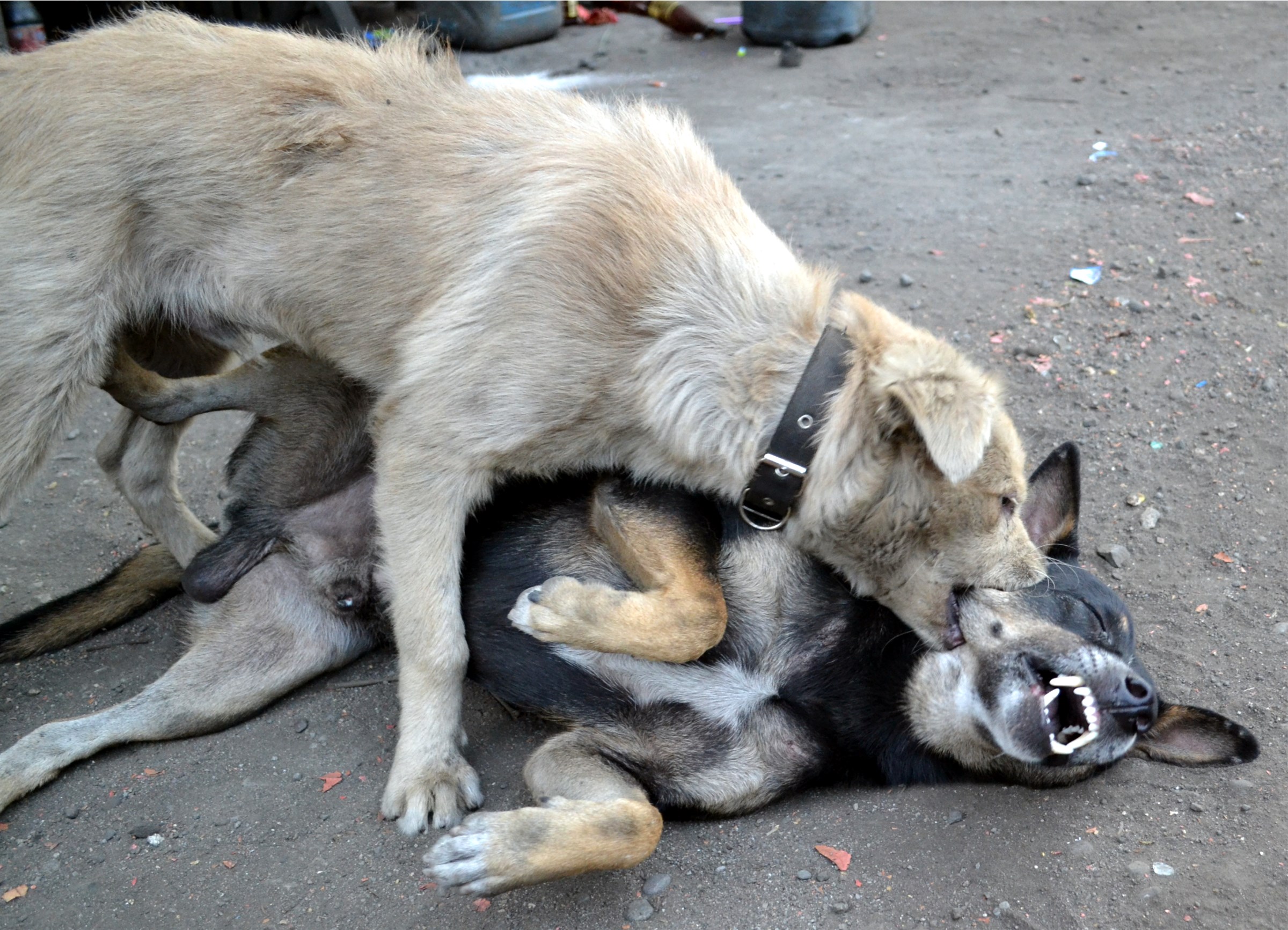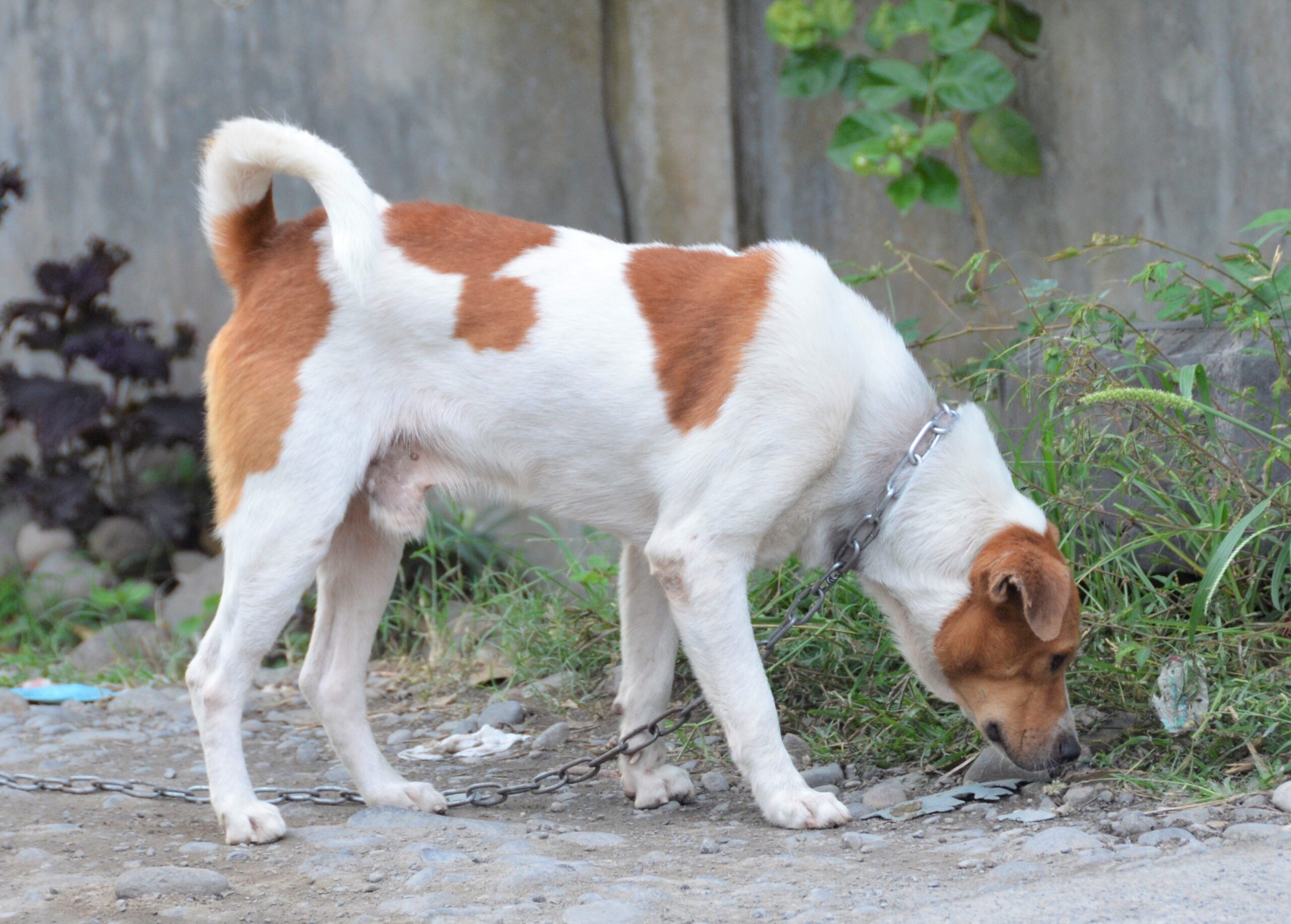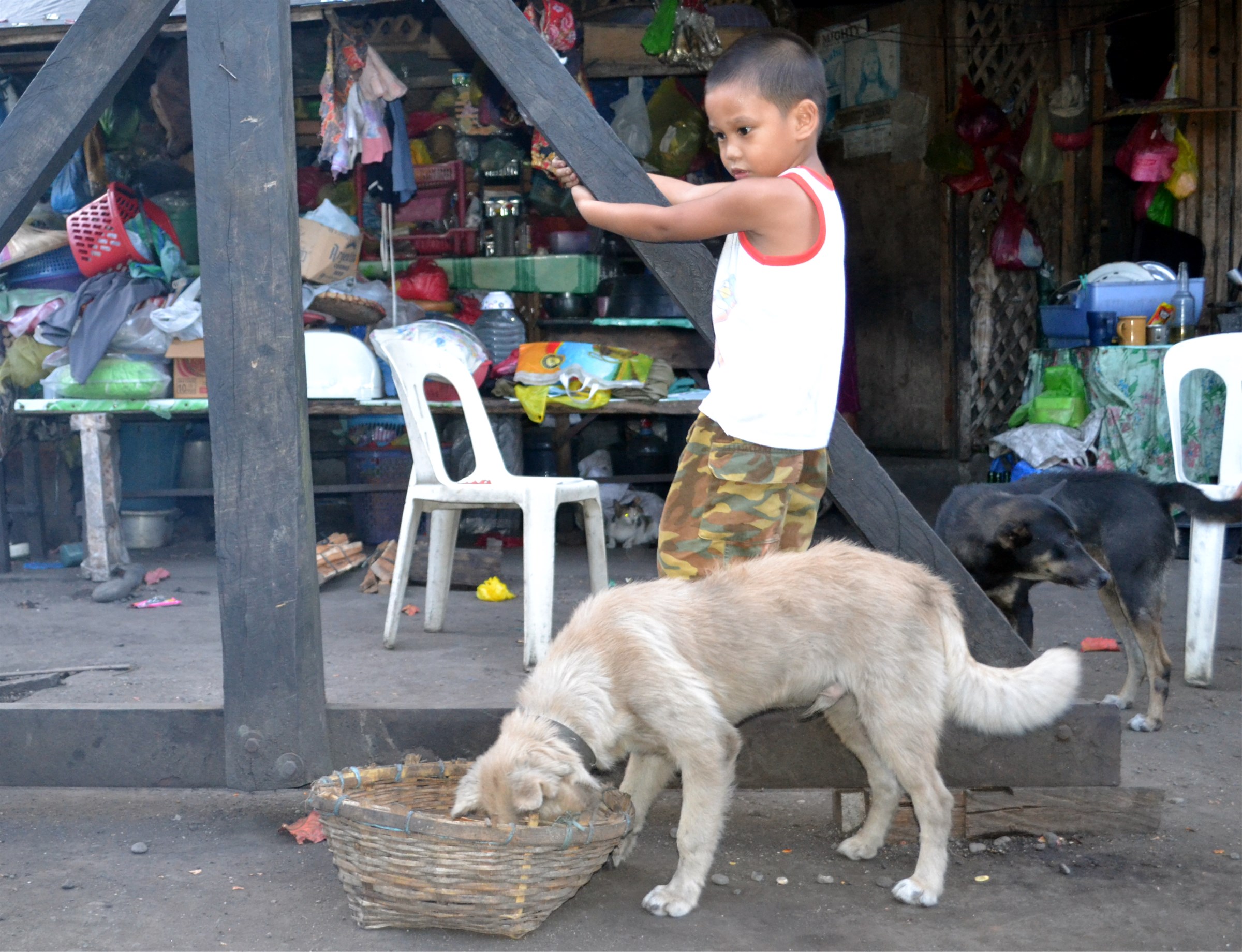Text and Photos by Henrylito D. Tacio
The lively eight-year-old Justin was bitten by a puppy dog in his hand while playing with the three-month pet. The parents did not give any significance to the small tooth mark (as a result of the bite) and just cleaned the wound with antiseptic.
They forgot the whole incident and never bothered to consult a doctor, even when the puppy died five days after Justin was bitten.
Ten days after the biting incident, the boy developed a fever, and it was then that the parents brought the child to a doctor who prescribed some medicine. Two more days passed, and the boy started talking irrelevantly, looked confused, and became sleepless.
On the thirteenth day after he was bitten by his puppy, Justin refused to take any water or food. At this time, the parents brought him back to the hospital, where both the mother and father were interrogated. They told him about the biting incident.
The attending physician suspected rabies and offered the boy a glass of water. Just by looking at the glass of water, the boy went into spasms and looked terrified. “I feel pity staring at the little boy who’s suffering from an incurable malady just because he had played with a puppy,” the attending physician lamented.
It was just a matter of time before Justin finally succumbed to rabies, a viral infection of the brain to which all mammals, including human beings, are susceptible.
“Rabies is one of the most terrifying diseases known to man,” said Dr. Dey Brato, who was president of the southern Mindanao chapter of the Philippine Society for Microbiology and Infectious Diseases when he uttered those words.
Rabies is indeed deadly but preventable. “(Rabies) has a case-fatality rate of almost 100% and so remains a major public health issue, even though it is known to be 100% preventable,” said a paper that was published in the June 2020 issue of the Philippine Journal of Science.
Although rabies is not among the leading causes of mortality and morbidity in the country, the Department of Health (DOH) still considered it as a significant public health problem because it is one of the most acutely fatal infections.
In a 1999 paper published in British Medical Journal (BMJ), it was reported that the number of rabies cases in the Philippines “is increasing, despite government promises to rid the country of the problem by 2020.”
In 1996, 337 people died of rabies which went down to 321 in 1997 but increased in 1998 with 362 deaths. In Davao Region, over 200 human rabies cases are recorded each year, according to a study.



Still a health issue
Despite the enactment of Republic Act 9482, otherwise known as the Rabies Act of 2007, rabies remains a health issue in the country.
One reason why rabies is still with us – when it is already eliminated in Singapore, Japan, and other highly industrialized countries – is that rabies is one of the most misunderstood diseases by Filipinos.
Many, especially those in rural areas, still believe that garlic and a few drops of vinegar can cure rabies. Others believe that a quack doctor – called tandok – has the power to eliminate the virus from the body with the use of a stone or by sucking with the use of a carabao horn.
A document obtained by this author from the Bureau of Animal Industry (BAI) cites several other reasons why rabies is still a problem in the country: lack of appreciation by local chief executives to the rabies program as public health threat leading to poor implementation and ineffective local ordinance in the implementation of the rabies prevention and control program.
Other more reasons are as follows: poor vaccination coverage by the province; numerous stray dogs, poor implementation of stray dogs and no dog pound; lack of funding; and limited, if not lack, of personnel.
Principal sources
Although rabies is also present in other animals, dogs remain the principal animal source of rabies. This has been supported by a recent study that was published in PLoS ONE. “Most of the animal rabies cases (in Davao City) are coming from dog samples with a total of 210 rabies-infected dogs reported from 2006 to 2017,” the study reported.
If you are bitten by a dog, don’t kill the animal. But a man from Dumingag, Zamboanga del Sur, did not only kill the dog but butcher it for meat after being bitten by his dog. He cooked the meat and gave some to his friends and relatives. Fifteen days after he was bitten, he died. Those that had eaten the meat were reported to be infected too with rabies.
Medical experts say cooking does not kill the rabies. “Since rabies is a nerve-lover, it is concentrated in the brain. So, don’t eat the (dog’s) brain,” they caution.
A person can also get rabies by kissing a rabid person and by using his or her utensils. Because of this, the Department of Health discourages members of the family dying of rabies from giving a farewell kiss as it could mean a “kiss of death.” The victim, after all, is a reservoir of the rabies virus.
Any mammals are possible carriers of rabies, according to petmd.com. Aside from dogs and cats, domesticated animals like cattle, carabao, pigs, goats, and horses also have rabies. No rabies has been isolated from a bird, wild rat, or rabbit, nor from such pets as white rats or mice, hamsters, or guinea pigs.
The rabies virus is present in the saliva, brain, and spinal cord of an infected animal, according to the health department. There are two types of exposure: bite and non-bite.
“The most dangerous and common route of rabies exposure is from the bite of a rabid animal,” wrote Dr. Virgilio M. Ofiana on a rabies feature. “Exposure to rabies might also occur (non-bite) when virus-containing saliva or nerve tissue is introduced into fresh, open cuts in the skin or onto mucous membranes (that is, linings of the mouth and airways).”
Rabies in dogs
In dogs, there are two types of rabies: “dumb” type (present in about 60%) and “furious” type (reported in about 40%). Also known as paralytic rabies, the dumb type is observed when the dog has a dropped jaw with tongue hanging out and saliva drooling. This manifestation is due to paralysis of the throat muscles.
“This dog cannot bite and is not dangerous unless you put your hand in its mouth,” Dr. Ofiana explained. “Occasionally, the paralysis may start in the hind legs and rapidly progress forward. This type can bite but is usually not vicious. It usually dies within three to five days.”
It is entirely a different story for the furious type.
The symptoms, according to Dr. Ofiana, occur in the following sequence: change in “personality,” starting with a horse bark due to paralysis of the vocal cords; tries to hide in dark corners, closets, or under the bed; becomes highly excitable, is restless and tries to get away; keeping it in a pen is difficult; and starts to roam and may do so for kilometers, snapping and biting at anything that moves and gets in the way. It dies within 4-8 days due to complete paralysis.
“The bite of a rabid animal is not the cause of rabies infection,” Dr. Brato explained. “It is the saliva of the affected animal. The bite is just an instrument so that the virus-infected saliva can be transferred to the victim.”
Rabies in human beings
The incubation period – the time elapsed between exposure and when signs and symptoms first become apparent – of rabies among human beings is usually three to eight weeks but may be as long as two years. Medical researchers say rabies develops with three main phases: prodromal period, acute neurological period, and coma.
In the prodromal stage (lasting 2-10 days), the symptoms are mild and non-specific. They include a slight fever, chills, malaise, headache, anorexia, nausea, sore throat, and a persistent loose cough. A specific early symptom is local or radiating pain, burning, or itching, a sensation of cold, and/or tingling at the bitten site.
The acute neurological phase starts when the patient experiences nervousness, anxiety, agitation, marked restlessness, apprehension, irritability, excessive salivation (one to 1.5 liters in 24 hours), secretion of tears, and perspiration.
As the virus begins replicating in the brain, nerves in the skull are impaired, causing eye problems like the absence of corneal reflexes. At the same time, there is the weakness of facial muscles and hoarseness. This period is also called excitation, as the patient is often lucid between excitation and hydrophobic episodes.
“Hydrophobia (the fear of water) is experienced by 17 to 18 percent of rabies patients,” said Dr. Alberto Romualdez, Jr., when he was the health secretary. “In this stage, there are forceful, painful muscle spasms of the throat, which expel any liquids administered orally.” Hydrophobic episodes last 1-5 minutes.
Coma is the terminal phase. “After the patient has become comatose, hydrophobia is replaced by an irregular pattern of respiration-cluster breathing with long apneic periods,” explained Dr. Brato. “This is soon followed by progressive paralysis until the patient dies.”
Actually, “a person dies of rabies because of the overwhelming viral infection of the brain or central nervous system,” said Dr. Mary Elizabeth Miranda, who was the leader of the rabies research program at the Research Institute for Tropical Medicine (RITM) when interviewed by this author.
What to do when bitten
The Davao-based Animal Bite Center (ABC) urges that once you are bitten by an animal – whether infected or not – immediately wash the wound with running water. “Washing with soap and water for 15 minutes with lather formation kills the majority of the viruses,” it says.
Applying antiseptic/alcohol after wound wash kills the viruses further. “Do not apply powder, milk or other irritants on the wound,” ABC warns. “They do not kill the virus but cause its further spread.”
The US-based Cleveland Clinic adds the following tips: Wrap the wound in a sterile bandage. Keep the wound bandaged and see your doctor. Change the bandage several times a day once your doctor has examined the wound.
“Animal bite is not an emergency case, there is no need to panic,” the ABC reminds. “Anti-rabies injection can be delayed by a day or two. However, if there is a massive nonstop bleeding or torn flesh, the nearest hospital can help you manage it.”
People not previously immunized with rabies vaccine should receive immediate treatment with human rabies immune globulin (HRIG) – made from purified serum of people who were previously immunized with rabies vaccine and contains rich antibody against rabies – which is injected into and around the wound, followed by rabies vaccination.
Two types of rabies vaccine are now available. The original human diploid cell vaccine (HDCV) and a new purified chick embryo culture vaccine (PCEC). After exposure, five doses of either rabies vaccine must be injected into a muscle (intramuscularly) over a one-month period.
While this treatment should be adequate to prevent the development of rabies, treatment can be simplified if a rabies vaccine is given prior to exposure. Prior vaccination may also offer some degree of protection in cases when treatment after an animal bite may be unavoidably delayed.
Vaccination against rabies would consist of three low-dose injections into the skin (intradermal) of the HDCV or three intramuscular injections of the PCEC vaccine given over a one-month period. The first dose is followed by a second in one week and the third in 3-4 weeks. Once vaccinated, if a person experiences an animal bite, treatment would then consist of only two booster doses of vaccine three days apart.
Protection against rabies
Unknowingly, there are several ways of protecting Filipinos from rabies. First is to reduce the risk of exposure. In high-risk areas, people need to avoid contact with wild animals and stray dogs (particularly if they appear in distress or are behaving unusually).
Another is to vaccinate pets and animals which may be carriers of rabies.
“Vaccination and dog population control are more cost-effective and more doable in controlling the disease in animals,” Dr. Miranda said.

